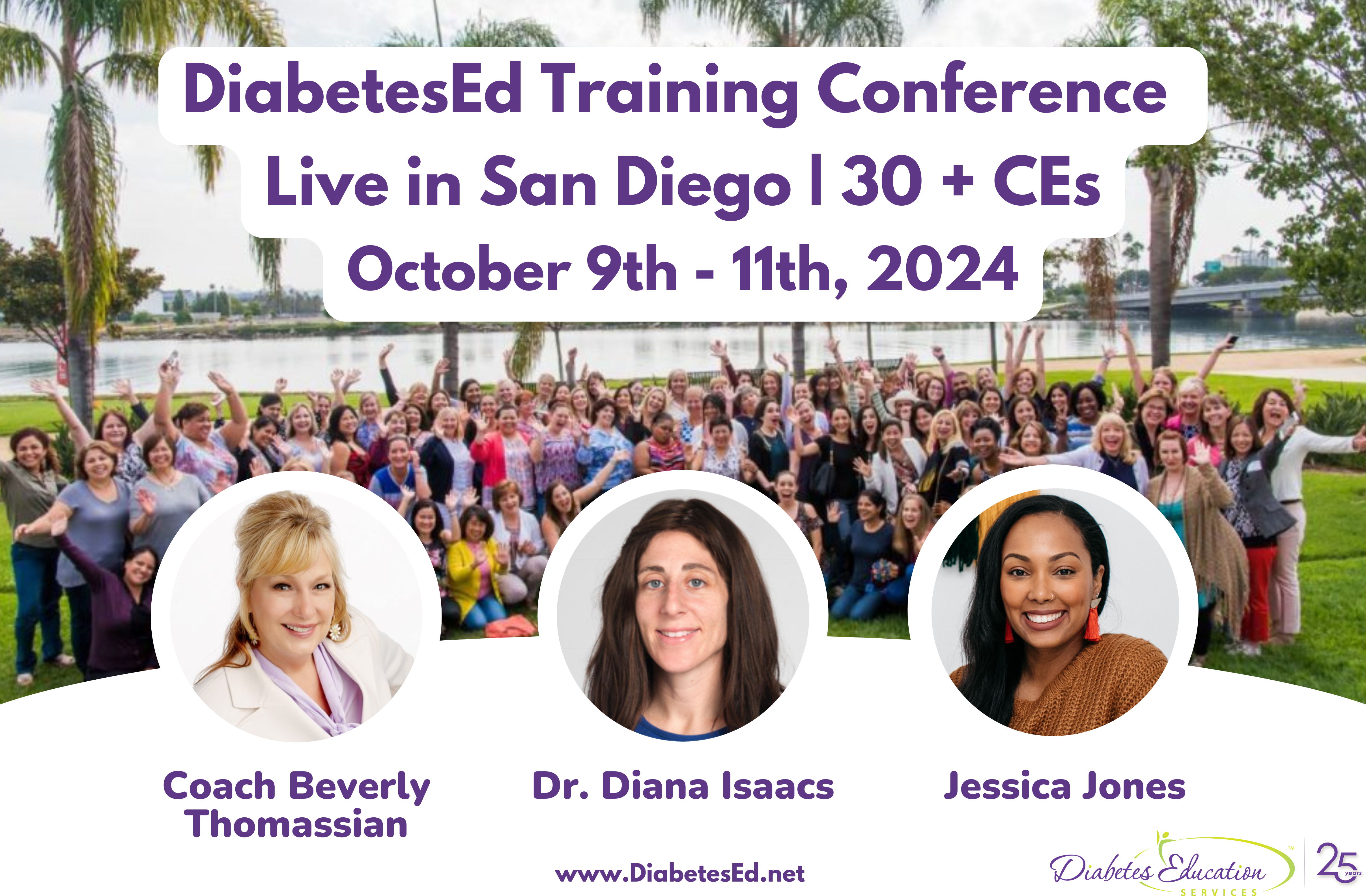Only 40% Get Kidney Health Tested Annually
About 30% to 40% of people with diabetes will experience chronic kidney disease (CKD), and most won’t know they have worsening kidney function. According to a recent study, approximately 90% of people with CKD in the United States don’t even know they are experiencing a decline in kidney function. This lack of awareness is due to inadequate annual renal function testing.

A recently published study from the National Kidney Foundation and National Committee for Quality Assurance showed that fewer than 40% of adults with diabetes received the clinically recommended testing for chronic kidney disease in 2017.
To measure testing frequency, researchers looked at Kidney Health Evaluation for People with Diabetes (KED). Ked is a component of the Healthcare Effectiveness Data Information Set, built on the American Diabetes Association (ADA) and National Kidney Foundation recommendations.
To meet KED fulfillment criteria, the standards require that people with diabetes get tested for kidney disease at least annually using both:
- A blood test to measure kidney function or estimated glomerular filtration rate (eGFR) and
- A urine test, urine albumin-creatinine ratio (UACR), to measure kidney damage (see image below for ADA Standards and measurements)
In addition to low testing frequency overall, the study highlights disparities in KED fulfillment among Black Americans and socioeconomically disadvantaged groups, underscoring the urgent need to address these disparities to ensure equitable care for all.
Since only 40% of people with diabetes are getting GFR and UACR tested annually, a significant portion of individuals with diabetes are not be receiving the recommended kidney function monitoring. Regular kidney function testing is crucial to identify any signs of kidney damage early and take appropriate measures to prevent or slow down the progression of kidney disease in individuals with diabetes.
Annual GFR and UACR testing fulfillment is associated with improved diabetes care, earlier CKD diagnosis, and initiation of evidence-based kidney protective interventions, according to the results. In addition, annual KED testing increases the prescription of evidence-based drugs for blood pressure and blood sugar management, along with interdisciplinary care. However, researchers observed disparities in meeting these criteria among Black adults, those with Medicare-Medicaid dual eligibility status, residents of low-income neighborhoods, and individuals with limited education.
Diabetes Care and Education Specialists have a Critical Role
Diabetes care and education specialists, along with healthcare providers, can play a critical role in helping track annual testing and encouraging people with diabetes to undergo kidney function evaluation as part of their diabetes management plan. Increasing awareness about the importance of these tests and improving access to healthcare services can help enhance the annual GFR and UACR testing rate among people with diabetes, especially in under-resourced communities.
Additionally, individuals with diabetes can proactively discuss these tests with their healthcare providers to ensure they are engaged in preserving kidney health.
Fulfillment and Validity of the Kidney Health Evaluation Measure for People with Diabetes
Read more for a quick summary of what to look for when evaluating kidney function in our blog here.

Join us LIVE in San Diego for our DiabetesEd Training Conference
October 11-13th, 2023

Two Registration Options
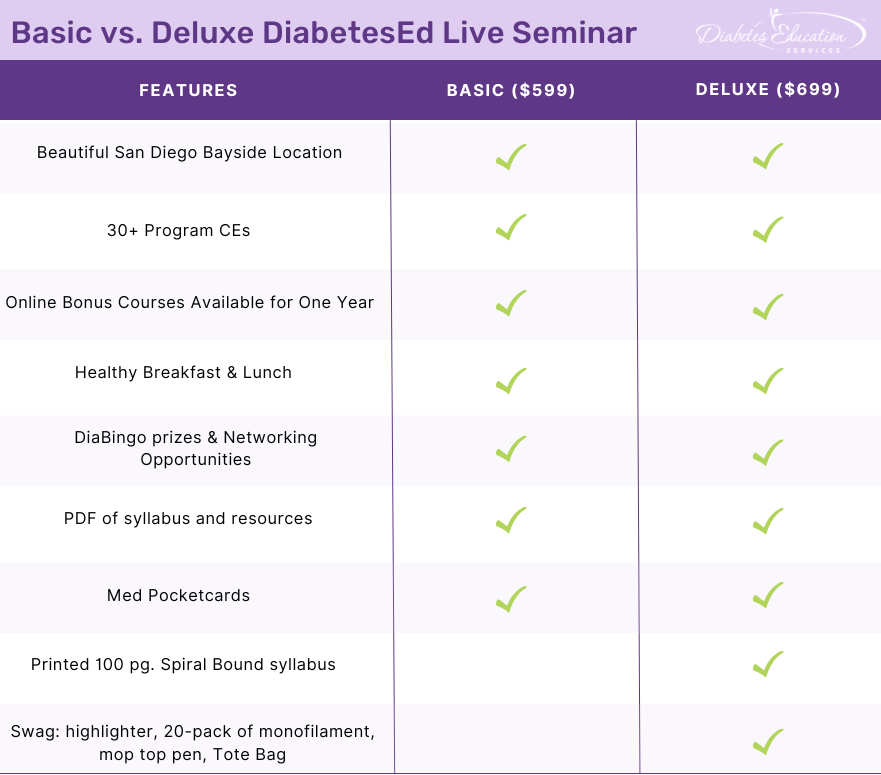
Join Coach Beverly and Team for two and a half days of knowledge-sharing, fun, networking, games with prizes, and “aha” moments in beautiful San Diego.
You don’t want to miss this one-of-a-kind learning opportunity. Get away from all those daily responsibilities and immerse yourself in a fun and intensive conference with plenty of networking opportunities.
Attendees will leave this conference with new tools and a more complete understanding of the latest advances in diabetes care, from medications to technology to Medical Nutrition Therapy!
Bring your colleagues and enjoy our friend discount.
Our team expertly translates the complex science of diabetes into understandable terms while keeping it real, practical, and fun.
Team of expert faculty includes:
- Diana Isaacs, PharmD, BCPS, BC-ADM, BCACP, CDCES – Educator of the Year, 2020
- Coach Beverly Thomassian, RN, MPH, CDCES, BC-ADM
- Ashley LaBrier, MS, RD, CDCES, Diabetes Program Coordinator
All hours earned count toward your CDCES Accreditation Information
Sign up for Diabetes Blog Bytes – we post one daily Blog Byte from Monday to Friday. And of course, Tuesday is our Question of the Week. It’s Informative and FREE! Sign up below!
The use of DES products does not guarantee the successful passage of the CDCES exam. CBDCE does not endorse any preparatory or review materials for the CDCES exam, except for those published by CBDCE.
Pharmacists Month – Great time to Recognize these Trailblazers
New Ozempic Warnings: Intestinal Blockage and Hypoglycemia
Rationale of the Week | Strategies to get glucose “under control”

For last week’s practice question, we review strategies for keeping glucose “under control.” 79% of respondents chose the best answer which is awesome. We want to clarify and share this important information, so you can pass it on to people living with diabetes and your colleagues, plus prepare for exam success!
Before we start though, if you don’t want any spoilers and haven’t tried the question yet, you can answer it below: Answer Question
Question: JR is 13 years old and has type 1 diabetes and their time in range is usually less than 50%. JR’s mom finds empty soda bottles hidden in the back of JR’s drawer along with some candy bars.
JR’s mom is very upset about this discovery and asks you how to get this “situation under control”. What is the most appropriate response?
Answer Choices:
- Empathize with her and acknowledge that non-adherence is very common in this age group.
- Gently ask her if she has noticed any other signs of disordered eating.
- Explore if they have established clear guidelines for daily carb counting.
- Recognize her feelings and explore problem solving strategies.
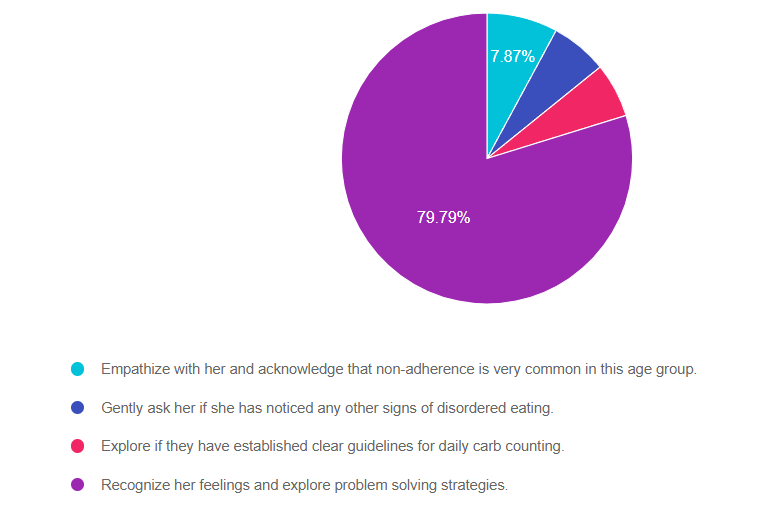
Getting to the Best Answer
If you are thinking about taking the certification exam, this practice test question will set you up for success. Test writers anticipate possible answers based on the details in the question. They will wave those “juicy answers” right under your nose. Your job is to weed through the particulars, pluck out the most important elements and choose the BEST answer.
Answer 1 is incorrect. 7.87% chose this answer. “Empathize with her and acknowledge that non-adherence is very common in this age group.” Although this answer starts out with empathy, the second half reinforces the outdated concept of “non-adherence”. If JR is eating candy bars and drinking sodas, then hiding the evidence, indicates that JR might be experiencing big emotions around food restrictions that need exploration.
Answer 2 is incorrect. 6.30% of you chose this answer. “Gently ask her if she has noticed any other signs of disordered eating.” We can’t assume that JR has disordered eating because they are eating candy bars and drinking sodas, then hiding the evidence. This behavior may indicate that JR is experiencing big emotions around food restrictions that need exploration.
Answer 3 is incorrect. About 6.04% of respondents chose this. “Explore if they have established clear guidelines for daily carb counting.” Even though JR is eating candy bars and drinking sodas, then hiding the evidence, it doesn’t indicate that they additional information on carb counting or are in need of stricter guidelines.
Finally, Answer 4 is correct. 79.79% chose this answer. “Recognize her feelings and explore problem-solving strategies.” YES, GREAT JOB. This is the best answer. If JR is eating candy bars and drinking sodas, then hiding the evidence, this indicates that JR might be experiencing big emotions around food restrictions that need exploration.
We hope you appreciate this week’s rationale! Thank you so much for taking the time to answer our Question of the Week and participate in this fun learning activity!
Want to learn more about this practice question?
Join us LIVE in San Diego for our DiabetesEd Training Conference
October 11-13th, 2023

Two Registration Options

Join Coach Beverly and Team for two and a half days of knowledge-sharing, fun, networking, games with prizes, and “aha” moments in beautiful San Diego.
You don’t want to miss this one-of-a-kind learning opportunity. Get away from all those daily responsibilities and immerse yourself in a fun and intensive conference with plenty of networking opportunities.
Attendees will leave this conference with new tools and a more complete understanding of the latest advances in diabetes care, from medications to technology to Medical Nutrition Therapy!
Bring your colleagues and enjoy our friend discount.
Our team expertly translates the complex science of diabetes into understandable terms while keeping it real, practical, and fun.
Team of expert faculty includes:
- Diana Isaacs, PharmD, BCPS, BC-ADM, BCACP, CDCES – Educator of the Year, 2020
- Coach Beverly Thomassian, RN, MPH, CDCES, BC-ADM
- Ashley LaBrier, MS, RD, CDCES, Diabetes Program Coordinator
All hours earned count toward your CDCES Accreditation Information
Sign up for Diabetes Blog Bytes – we post one daily Blog Byte from Monday to Friday. And of course, Tuesday is our Question of the Week. It’s Informative and FREE! Sign up below!
The use of DES products does not guarantee the successful passage of the CDCES exam. CBDCE does not endorse any preparatory or review materials for the CDCES exam, except for those published by CBDCE.
Question of the Week | What explains nocturnal hyperglycemia?
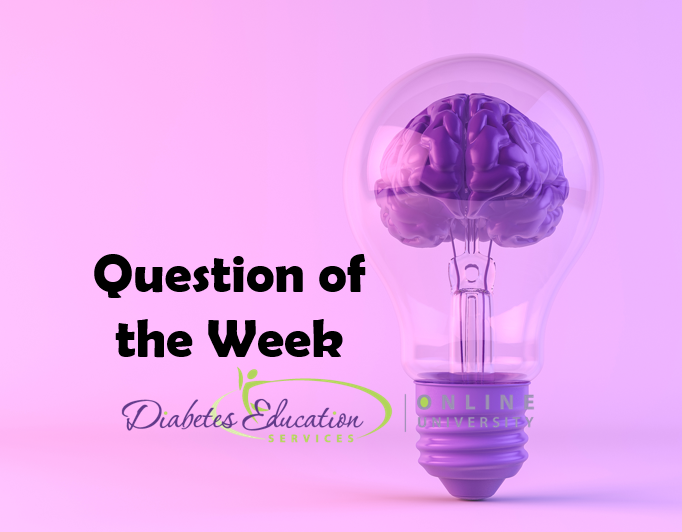
JR is 11 years old with type 1 diabetes and their parent shares their concern that the blood glucose seems to be rising overnight with morning hyperglycemia. The parent is worried that JR may be sneaking snacks in the night.
As a diabetes specialist, you know that this glucose rise is most likely due to:
- Overnight hormonal fluctuations.
- Nocturnal hypoglycemia followed by hyperglycemia.
- Slow onset of diabetes ketoacidosis.
- Insuilin pump or CGM malfunction.
Click Here to Test your Knowledge
Want to learn more about this practice question?
Join us LIVE in San Diego for our DiabetesEd Training Conference
October 11-13th, 2023

Two Registration Options

Join Coach Beverly and Team for two and a half days of knowledge-sharing, fun, networking, games with prizes, and “aha” moments in beautiful San Diego.
You don’t want to miss this one-of-a-kind learning opportunity. Get away from all those daily responsibilities and immerse yourself in a fun and intensive conference with plenty of networking opportunities.
Attendees will leave this conference with new tools and a more complete understanding of the latest advances in diabetes care, from medications to technology to Medical Nutrition Therapy!
Bring your colleagues and enjoy our friend discount.
Our team expertly translates the complex science of diabetes into understandable terms while keeping it real, practical, and fun.
Team of expert faculty includes:
- Diana Isaacs, PharmD, BCPS, BC-ADM, BCACP, CDCES – Educator of the Year, 2020
- Coach Beverly Thomassian, RN, MPH, CDCES, BC-ADM
- Ashley LaBrier, MS, RD, CDCES, Diabetes Program Coordinator
All hours earned count toward your CDCES Accreditation Information
Sign up for Diabetes Blog Bytes – we post one daily Blog Byte from Monday to Friday. And of course, Tuesday is our Question of the Week. It’s Informative and FREE! Sign up below!
The use of DES products does not guarantee the successful passage of the CDCES exam. CBDCE does not endorse any preparatory or review materials for the CDCES exam, except for those published by CBDCE.
New FREE Podcast Series – Diabetes Decoded: Expert Insights with Coach Beverly
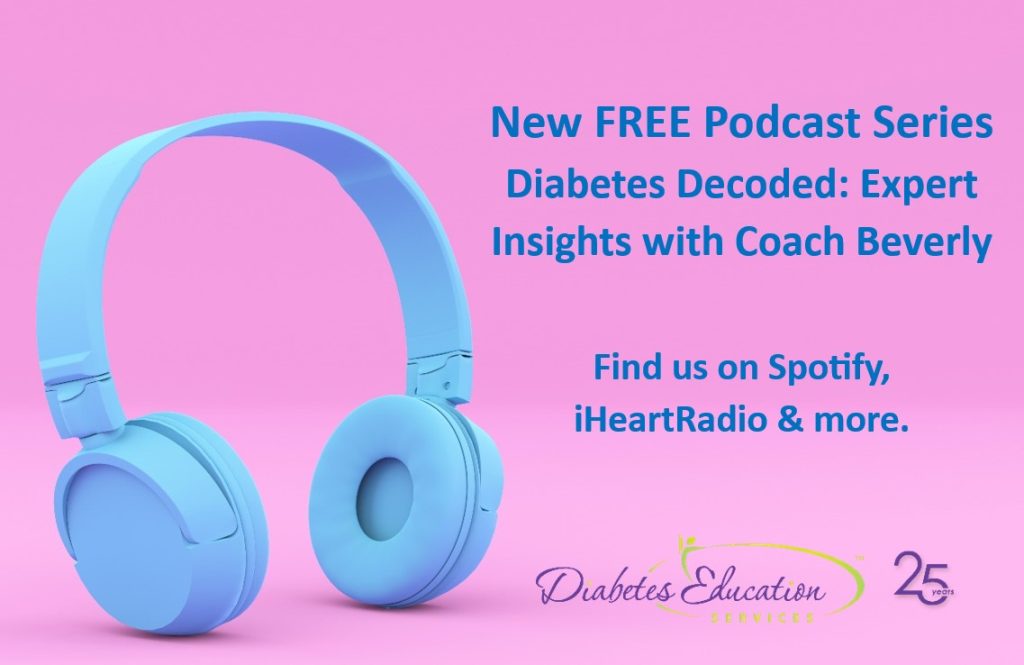
We are excited to announce Diabetes Decoded: Expert Insights with Coach Beverly FREE podcasts, available on most streaming platforms!
Our new Diabetes Decoded Podcast Series makes it easy to access our library of FREE courses no matter where you are, so you can listen to this information on the go on your mobile device or while driving.
At Diabetes Education Services, our goal is to provide inclusive learning opportunities for healthcare professionals seeking certification or updates on the latest diabetes information. We have curated nine free course topics and plan to add two more to this FREE learning library by the end of the year.
Diabetes Decoded FREE Podcast Topics:
- Prep for CDCES Exam
- Prep for BC-ADM Exam
- CDCES or BC-ADM – Which certification is right for me?
- Test-Taking Practice Exam Strategies
- 3 Steps to Save Feet: Assess, Screen, and Report
- Behavior Change Made Easy
- Impact of Adverse Childhood on Health and Diabetes
- What We Say Matters: Language that Respects the Individual & Imparts Hope
- Getting to the Gut; Meet your Microbiome
- Mindfulness and Compassion in the Diabetes Encounter
Our podcasts are an audio version of Coach Bev’s FREE webinars and stream on platforms such as Spotify, Amazon Music, Castbox, and Google Podcast! These websites have downloadable apps so you can take Coach Bev with you on your phone or listen to her in the car. Each of these apps has listening features that allow you to enjoy this handpicked library of free podcasts. Stay tuned for any updates or potentially podcast-exclusive information.
Listen to Spotify FREE Webinar Playlist
Podcasts are perfect for information sharing. As a company dedicate to improving diabetes care, we are excited to provide these for free so that more people can access and enjoy them without any cost. No CEs are provided, but our podcasts are chock full of helpful information and there is more to come!
New Diabetes Decoded Podcast Topics Coming Soon:
- Behavior Change Made Easy – August, 2023
- Revitalizing your Diabetes Program – September, 2023
Thanks again for making a difference in the lives of people with diabetes. We appreciate all you do!
NEW: Diabetes Technology Data Toolkit: Hands-on Data Interpretation Workshop with Dr. Diana Isaacs
Join Diana Isaacs live on August 30th, 2023, at 11:30 am PST
As diabetes technology is becoming commonplace in our practice, figuring out how to make sense of all the data can seem overwhelming. Dr. Isaacs has a special knack for breaking down the essential elements of the Ambulatory Glucose Profile (AGP) and other reports to provide participants with a clear road map for data interpretation. She includes tons of sample practice cases utilizing CGM, connected pens, and insulin pumps.
By attending this interactive workshop, participants will become more confident in interpreting the AGP and continuous glucose monitor (CGM) data and determining needed medication and lifestyle adjustments.
Topics include:
- Learn how to review the ambulatory glucose profile (AGP) report systematically and efficiently.
- Understand the key metrics of CGM Data and person-centered goals.
- Utilize CGM and connected data to make medication adjustments and lifestyle/behavior recommendations.
- Apply data interpretation principles to a wide variety of cases in people with type 1 and type 2 diabetes.
Instructor: Diana Isaacs, PharmD, BCPS, BCACP, CDCES, BC-ADM, FADCES, FCCPCES, was awarded ADCES Diabetes Care and Educational Specialist of the Year for her educational platform promoting the use of CGM for people with diabetes and other innovations. She is the Director of Education & Training in Diabetes Technology at the Cleveland Clinic. She has numerous diabetes publications and research projects focusing on medications, CGM, and diabetes technology. You won’t want to miss this hands-on workshop with an international expert in the field.
All hours earned count toward your CDCES Accreditation Information
Sign up for Diabetes Blog Bytes – we post one daily Blog Byte from Monday to Friday. And of course, Tuesday is our Question of the Week. It’s Informative and FREE! Sign up below!
The use of DES products does not guarantee the successful passage of the CDCES exam. CBDCE does not endorse any preparatory or review materials for the CDCES exam, except for those published by CBDCE.
Rationale of the Week | How Can TR Improve Time in Range?

For last week’s practice question, we review how to help improve time in range. 79% of respondents chose the best answer which is awesome. We want to clarify and share this important information, so you can pass it on to people living with diabetes and your colleagues, plus prepare for exam success!
Before we start though, if you don’t want any spoilers and haven’t tried the question yet, you can answer it below: Answer Question
Question: TR is 25 and has new type 1 diabetes and is hoping to get on an insulin pump soon. TR weighs 70 kgs and takes 8 units basal insulin at bedtime, plus takes 1 unit bolus insulin for every 15 gms of carbohydrate and their correction for hyperglycemia is 1 unit for every 50 points above 120. When looking at TR’s ambulatory glucose profile, their time in range is 32% with 67% above range and about ~1% below range. Glucose levels tend to increase starting with dinner at 5pm and stay elevated throughout the night.
Based on this information, what change(s) could help improve time in range?
Answer Choices:
- Avoid Somogyi effect from stacking bolus insulin.
- Change insulin to carb ratio to 1:17.
- Increase basal insulin by 2-3 units.
- Adjust correction ratio to 1 unit for every 60 points above 120.
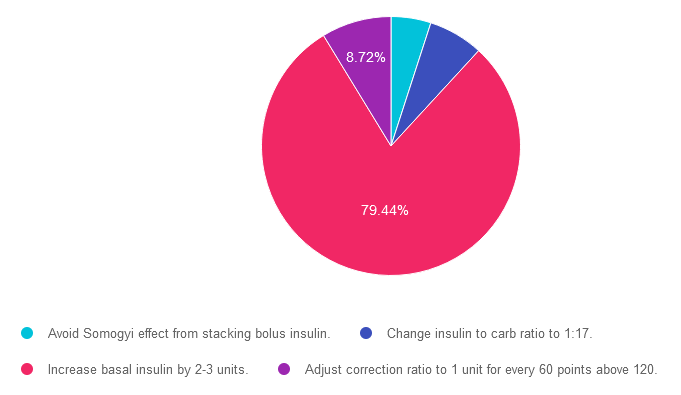
Getting to the Best Answer
If you are thinking about taking the certification exam, this practice test question will set you up for success. Test writers anticipate possible answers based on the details in the question. They will wave those “juicy answers” right under your nose. Your job is to weed through the particulars, pluck out the most important elements and choose the BEST answer.
Answer 1 is incorrect. 4.98% chose this answer. “Avoid Somogyi effect from stacking bolus insulin.” Somogyi is when blood sugars drop and the counter-regulatory system releases hormones that can dramatically increase blood sugar levels (sometimes referred to as rebound hyperglycemia). Since TR’s glucose levels tend to increase starting with dinner at 5pm and stay elevated throughout the night, they are not experiencing the hypoglycemia associated with the Somogyi effect.
Answer 2 is incorrect. 6.85% of you chose this answer. “Change insulin to carb ratio to 1:17.” Since TR’s glucose levels tend to increase starting with dinner at 5pm and stay elevated throughout the night, this is not due to post meal hyperglycemia. Overnight hyperglycemia is usually connected to inadequate basal insulin dosing.
Answer 3 is correct. About 79.44% of respondents chose this. “Increase basal insulin by 2-3 units.” YES, GREAT JOB! Since TR’s glucose levels tend to increase starting with dinner at 5pm and stay elevated throughout the night, this is an indication that TR has inadequate basal insulin dosing.
Finally, Answer 4 is incorrect. 8.72% chose this answer. “Adjust correction ratio to 1 unit for every 60 points above 120.” Since TR’s glucose levels tend to increase starting with dinner at 5pm and stay elevated throughout the night, this is not due to post meal hyperglycemia or inadequate bolus insulin correction coverage. Overnight hyperglycemia is usually connected to inadequate basal insulin dosing.
We hope you appreciate this week’s rationale! Thank you so much for taking the time to answer our Question of the Week and participate in this fun learning activity!
Want to learn more about this question?
NEW: Diabetes Technology Data Toolkit: Hands-on Data Interpretation Workshop with Dr. Diana Isaacs
Join Diana Isaacs live on August 30th, 2023, at 11:30 am PST
As diabetes technology is becoming commonplace in our practice, figuring out how to make sense of all the data can seem overwhelming. Dr. Isaacs has a special knack for breaking down the essential elements of the Ambulatory Glucose Profile (AGP) and other reports to provide participants with a clear road map for data interpretation. She includes tons of sample practice cases utilizing CGM, connected pens, and insulin pumps.
By attending this interactive workshop, participants will become more confident in interpreting the AGP and continuous glucose monitor (CGM) data and determining needed medication and lifestyle adjustments.
Topics include:
- Learn how to review the ambulatory glucose profile (AGP) report systematically and efficiently.
- Understand the key metrics of CGM Data and person-centered goals.
- Utilize CGM and connected data to make medication adjustments and lifestyle/behavior recommendations.
- Apply data interpretation principles to a wide variety of cases in people with type 1 and type 2 diabetes.
Instructor: Diana Isaacs, PharmD, BCPS, BCACP, CDCES, BC-ADM, FADCES, FCCPCES, was awarded ADCES Diabetes Care and Educational Specialist of the Year for her educational platform promoting the use of CGM for people with diabetes and other innovations. She is the Director of Education & Training in Diabetes Technology at the Cleveland Clinic. She has numerous diabetes publications and research projects focusing on medications, CGM, and diabetes technology. You won’t want to miss this hands-on workshop with an international expert in the field.
All hours earned count toward your CDCES Accreditation Information
Sign up for Diabetes Blog Bytes – we post one daily Blog Byte from Monday to Friday. And of course, Tuesday is our Question of the Week. It’s Informative and FREE! Sign up below!
The use of DES products does not guarantee the successful passage of the CDCES exam. CBDCE does not endorse any preparatory or review materials for the CDCES exam, except for those published by CBDCE.
Free Resources & Handouts | Find that perfect teaching handout, for FREE
Looking for that perfect free diabetes education handout? We are excited to share our collection of fantastic websites that provide you with easy access to hundreds of educational tools in a variety of languages. In addition, we have included links to some of our favorite teaching materials that you can download today. Please let us know if you have any websites that we can add to our list, enjoy!
Websites that offer FREE handouts for diabetes education
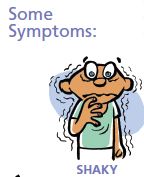
- ADA Diabetes Education Library Offers over 170 topics on diabetes that are searchable by topic and language. A treasure trove of educational info.
- CDC Diabetes Prevention Program Curricula and Handouts This site offers excellent resources for those interested in offering Diabetes Prevention Education.
- Diabetes Healthsense is an online library of resources compiled by the National Diabetes Education Program.
- A Guide to Drinking for People with Diabetes- Helpful resource that provides information on alcohol and diabetes.
Download Now:
- All about Blood Glucose Levels – It can be difficult for patients to learn all the important points of blood glucose control in a short office visit. Download this free patient handout, in English or Spanish, to help your patients self-manage their blood glucose levels long after their appointment.
- Medicare and You – A comprehensive summary outlining what services and supplies Medicare covers for beneficiaries.
- AACE Passport Wallet Card PDF » A tool that helps patients track if they are meeting AACE care goals from head to toes.
- Flu Vaccine and Diabetes » This printable document provides the patients with the rationale and importance of getting an annual flu vaccine.
- Hypoglycemia and Hyperglycemia Education Teaching Sheet » This handout is one of my favorites. Cartoon characters depict the signs and symptoms of low and high blood sugars and then detail steps to take.
- Medication Wallet Card PDF » pocket sized document that includes contact info, list of medications and critical health data.
- Medication Wallet Card in WORD » Add your program’s logo and provide your clients with a useful, customized document that includes contact info, list of medications and critical health data.
- 4 Steps to Control Your-Diabetes–English PDF » An excellent booklet for patients- 17 different languages and tons of great info.
- 4 Steps to Control Your Diabetes–Spanish PDF » An excellent booklet for patients-17 different languages and tons of great info.
- Pneumonia Vaccine and Diabetes » This printable document provides the patients with the rationale and importance of getting a pneumonia vaccine.
For more diabetes education resources, please visit our entire Article Library.





